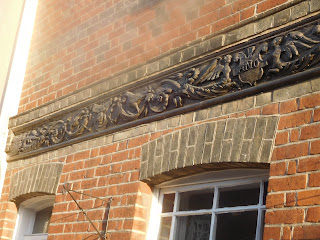Passive Resistance
Picture shows the chapel in Stoneham Street which is still in daily use.
In 1901 the post master living in East Street was John Anderson Dodds, aged 43. He had three assistants, all of whom boarded on the premises.
John Dodds found himself up before the magistrates in 1904, along with Walter Jepp, Emma Simpson, Thomas Percival and six others. They were charged with failing to pay their rates, or that portion of it which contributed to the upkeep of schools. Each refused to pay and an order was made for "distraint of goods". Property was to be confiscated and auctioned off to cover the debt. Dodds appeared on the same charge in 1905, 1907 and 1908.
In refusing to pay his rates, Dodds was part of a national movement which in 1904 involved 22,000 ratepayers - a campaign of passive resistance. But to what?
The Education Act of 1902, known as the Balfour Act, revolutionised the funding arrangements for schools. Promoted by the Conservatives and opposed by the Liberals and Labour, this was a hot issue in its day. Essentially the Act meant that sectarian schools - church schools - would now be funded out of the rates, something which Non-Conformists could not stomach.
John Clifford, the Baptist pastor or Westbourne Park church, London, spelt out three objections:the rates would be supporting religious teaching, sectarian schools were not under public control and teachers in church schools were subject to religious tests. The slogan he coined was "No Say, No Pay."
At the turn of the century, Coggeshall had a strong tradition of Non-Conformism. Even today the former chapel buildings of the Wesleyans, the Congregationalists, the Baptists and the Quakers can be seen in the town. When John Dodds appeared in court he was upholding a proud tradition of dissent.
A glance at the local newspaper of the day reveals that the courts were kept busy dealing with sizable numbers of passive resisters. This was so not just in Essex, but across the country.
So how did it all end? At the time, once goods had been seized and put up for auction, they were usually bought back in by friends of the resisters. However, in 1904 fifty-three resisters were sent to jail, so it was not simply time-wasting exercise. An attempt was made to pass a Bill relating to Non-Conformist education but it was defeated in the Lords. Dwindling numbers of resisters continued until 1914, by which time the country had something else to worry about and the issue faded away.


Comments
Post a Comment